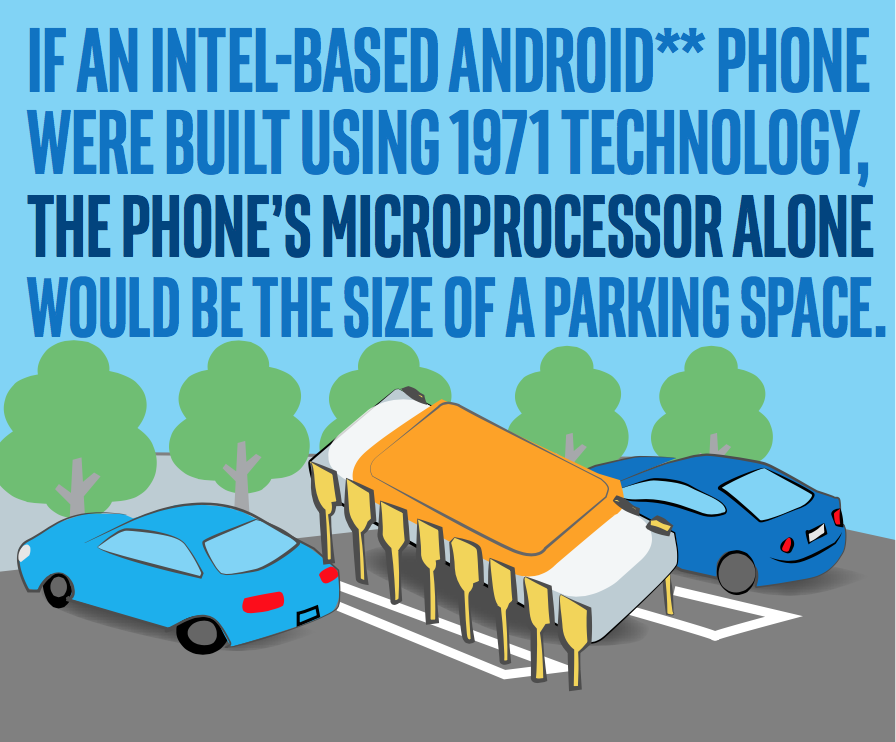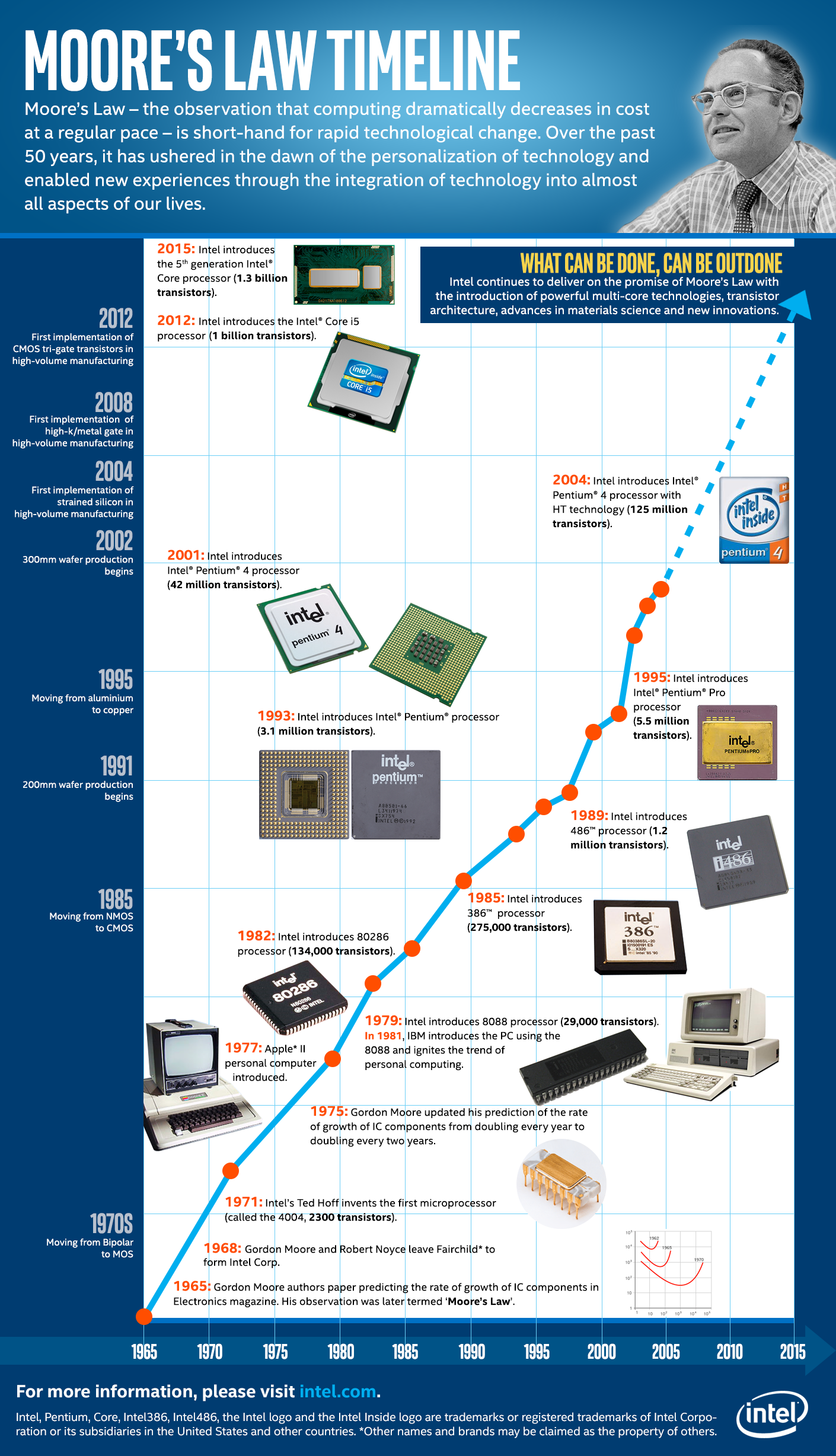"Moore's law" is the famous observation made by Gordon E. Moore, co-founder of Intel and Fairchild Semiconductor, on an article published in trade magazine Electronics 50 years ago.
The observation states that the number of transistors per square inch on integrated circuits would double every year. Moore predicted this trend would continue for the foreseeable future but he never imagined it would live for another five decades. During this time, the pace has slowed down a bit, but data density has doubled approximately every 24 months, and this is the current definition of Moore's Law, which Moore himself has blessed.
"The number of transistors incorporated in a chip will approximately double every 24 months."
--Gordon Moore, Intel co-founder
This week Intel is celebrating the impact that Moore's Law has had on our world with interviews, infographics, and additional bits of data, some of which we are sharing here...
Gordon Moore: Thoughts on the 50th Anniversary of Moore's Law
Fun Facts
- If fuel efficiency improved at the same rate as Moore's Law, you could drive a car for your entire life on a single tank of gas.
- Today's transistors are invisible to the naked eye. To see a single transistor, you'd have to enlarge a typical chip to the size of a house.

- If an Intel-based Android phone were built using 1971 technology, the phone's microprocessor alone would be the size of a parking space.
- Compared to Intel's first microprocessor, the Intel 4004, todays 14nm process delivers 3,500 times the performance at 90,000 times the efficiency and at 1/60,000th the cost.

